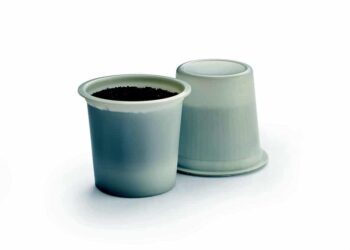A team of scientists from the Karolinska Institute in Sweden and the Swedish University of Agricultural Sciences reported that spider silk proteins can be incorporated into biologically active proteins and be converted into a gel at body temperature. The study “Spidroin N-terminal domain forms amyloid-like fibril based hydrogels and provides a protein immobilization platform” is published in Nature Communications.
“Recombinant spider silk proteins (spidroins) have multiple potential applications in development of novel biomaterials, but their multimodal and aggregation-prone nature have complicated production and straightforward applications. Here, we report that recombinant miniature spidroins, and importantly also the N-terminal domain (NT) on its own, rapidly form self-supporting and transparent hydrogels at 37°C,” write the investigators.
“The gelation is caused by NT a-helix to b-sheet conversion and formation of amyloid-like fibrils, and fusion proteins composed of NT and green fluorescent protein or purine nucleoside phosphorylase form hydrogels with intact functions of the fusion moieties. Our findings demonstrate that recombinant NT and fusion proteins give high expression yields and bestow attractive properties to hydrogels, e.g., transparency, cross-linker free gelation and straightforward immobilization of active proteins at high density.”
“We have developed a completely new method for creating a three-dimensional gel from spider silk that can be designed to deliver different functional proteins,” says Anna Rising, DVM, PhD, research group leader at the department of biosciences and nutrition, Karolinska Institute (KI), and professor at the department of anatomy, physiology, and biochemistry, Swedish University of Agricultural Sciences (SLU). “The proteins in the gel are very close together and the method is so mild that it can be used even for sensitive proteins.”
In the future, the researchers hope to use this knowledge to develop an injectable protein solution that forms a gel inside the body. Designing hydrogels for specific functions presents a range of possible applications. This could be used to achieve a controlled release of drugs into the body. In the chemical industry, it could be fused to enzymes to speed up various processes.
“In the slightly longer term, I think injectable gels can become very useful in regenerative medicine,” says the study’s first author Tina Arndt, a PhD student in Anna Rising’s research group at Karolinska Institute. “We have a long way to go, but the fact that the protein solution quickly forms a gel at body temperature and that the spider silk has been shown to be well tolerated by the body is promising.”
The researchers at KI and SLU have been particularly interested in the spiders’ ability to keep proteins soluble so that they do not clump together before the spinning of the spider silk. They have previously developed a method for the production of valuable proteins which mimics the process the spider uses to produce and store its silk proteins.
“We have previously shown that a specific part of the spider silk protein called the N-terminal domain is produced in large quantities and can keep other proteins soluble, and we can exploit this for medical applications,” says Rising. “We have let bacteria produce this part of the protein linked to functional proteins, including various drugs and enzymes.”
According to the study, the N-terminal domain also has the ability to change shape and transition to small fibrils that cause the protein solution to be converted into a gel if incubated at 37 °C. In addition, it can be fused to functional proteins that preserve their function in the gel.

















